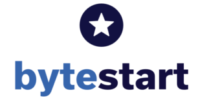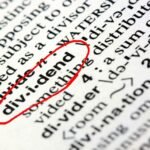When you buy certain new equipment, invest in buildings or research and development, you can deduct a proportion of the cost from your taxable profits and reduce your business tax bill, through Capital Allowances.
Capital Allowances take the place of commercial depreciation, which is not allowed for tax. Using them effectively can be a huge boost to your business, especially if you need to invest to fund growth.
Here’s a look at the main elements of the various capital allowances schemes and how your business can qualify to take advantage of them.
The main capital allowance schemes for business owners to consider are:
1. Annual Investment Allowance (AIA)
2. Writing Down Allowance (WDA)
3. Enhanced Capital Allowances (ECA)
4. Research & Development Tax Relief
Would your business benefit if you made an investment in new plant or machinery?
For example, if you own a restaurant, would improving your front of house help to bring in more customers, or are you wasting money on old, inefficient kitchen equipment?
If you run a printing firm, would the latest printer help you to be more efficient and win more business, or would a power shortage stop your business from operating?
If the answer to any of the above is yes, then you should think about spending the money in these essential areas and use the various capital allowance schemes to cut your tax bill.
Tide Business Bank Account - £50 Cashback!Simply open a free business current account to qualify. You can open a savings account at the same time and earn 4.33% APR variable on your surplus funds! Read our Tide review |
1. Annual Investment Allowance (AIA)
The Annual Investment Allowance (AIA) is a special allowance that provides 100% tax relief on assets qualifying as plant and machinery, subject to an annual maximum. This means that you can deduct the cost of the investment from your taxable profits and pay less tax.
What constitutes plant or machinery?
To qualify for AIA, the investment needs to satisfy several criteria. Firstly, it needs to be classed as “plant or machinery”. On the face of it, a vast number of assets could be viewed as “plant or machinery” so you could be forgiven for thinking that almost anything you purchase will qualify for AIA.
Unfortunately, this is not the case. To help you identify which items qualify for AIA, here’s a list of some typical assets that qualify as plant and machinery for AIA purposes;
What you can claim AIA for:
- Robotic machines and computer aided machinery
- Printing presses, lathes and tooling equipment
- Agricultural machines including tractors and combine harvesters
- Computers, office furniture and office equipment
- Heavy duty vehicles such as vans, lorries, trucks, cranes and diggers
- Integral features to buildings and structures such as electrical systems, cold water systems, water heating, ventilation, air conditioning, lifts, escalators and external solar shading
- Building fixtures, such as shop fittings, kitchen and bathroom fittings
- Games machines and amusement park rides
- Fibre optic cabling and wind machines
What you can’t claim AIA for:
The following are not permissible for AIA;
- Plant and machinery that has been used previously for other purposes such as furniture you used at your home that is then brought into the company as office furniture.
- Expenditure in the accounting period when your business ceased trading
- Cars. Whilst cars don’t qualify for AIA, you can use Writing Down Allowances for the business use of a vehicle (see below).
Additionally, you need to remember that the person acquiring the assets must also own them, so plant and machinery that are leased do not qualify for AIA.
FreeAgent - Brilliant Accounting SoftwareFreeAgent accounting software for sole traders and limited companies. 55% off first 6 months + 30-Day Free Trial. |
Current AIA limit is £1m for 2021
At present, the first £1m of your accounting year’s investment in plant and machinery, is currently allowed at 100%. This means that you can deduct the full cost of qualifying investments up to £1m from your taxable profits.
For example, if you spent £100,000 on new machinery during the year, and your taxable profits for the year were £500,000, using your AIA you could offset the £100,000 of expenditure against your £500,000 of profits so you would only be taxed on £400,000 of profits (£500,000 profits less £100,000 AIA investments).
You can allocate your Annual Investment Allowance against any qualifying expenditure you wish. It is quite acceptable to use your allowance against expenditure that qualifies for a lower rate of allowance such as long-life assets or integral features.
The AIA was temporarily raised to £1m during 2019 and 2020, and was due to revert to £200,000 on 1st January 2021. The government announced, on 12th November 2020, that the £1m limit will remain in place during 2021.
What if your business is making a loss?
If you make a £100,000 taxable loss and have AIA qualifying investment expenditure of £100,000, then simplistically this could increase your taxable losses to £200,000.
These losses can be carried forward which means if you then make a taxable profit of £200,000 the following year, potentially no corporation tax would be due.
2. Writing Down Allowance (WDA)
The Writing Down Allowance is a way of giving tax relief on part of the value of assets held in a pool.
If your expenditure is more than the Annual Investment Allowance (£1m until 31 December 2021), you can claim AIA on the first £1m and then claim writing down allowances on the balance. You can also claim WDA on assets that don’t qualify for AIA.
You must use writing down allowances if:
- You’ve already claimed AIA on items up to the current annual maximum of £1m
- The item doesn’t qualify for AIA. For example, cars, gifts or things you owned before you used them in your business
You deduct a percentage of the value from your profits each year when you use writing down allowances.
Writing Down Allowance pools
If you’re claiming writing down allowances, group items into pools depending on which rate they qualify for. There are 3 different types of pool:
- Special rate pool with a rate of 6%
- Main pool with a rate of 18%
- Single asset pools with a rate of 18% or 6% depending on the item
Check the latest rates here.
The special rate 6% pool applies to long life assets, the addition of thermal insulation to existing commercial buildings, and integral features of buildings, specifically:
- Electrical systems (including lighting systems)
- Cold water systems
- Space or water heating systems, powered systems of ventilation, air cooling or purification and any floor or ceiling comprised in such systems
- Lifts, escalators and moving walkways
- External solar shading
- Active facades (climate-responsive features)
The main 18% pool applies to most other ‘short-life assets’, assets projected to wear out quickly over a short period of time, including cars.
Writing down allowances are calculated pro-rata to the length of the period of accounts. So if you have a 15-month period of accounts, which is very possible when you are starting in business, writing down allowances are 15/12 of the usual amounts.
Business cars
You can claim capital allowances on cars you buy and use in your business. This means you can deduct part of the value from your profits before you pay tax.
You can only use Writing Down Allowance to work out what you can claim – cars don’t qualify for Annual Investment Allowance.
If you also use your car for private purposes you can only claim for the proportion of business use of the car – or of any other asset that has private use.
3. Enhanced Capital Allowances (ECA)
Enhanced Capital Allowances (ECAs) are a type of first year allowance specifically for certain environmentally beneficial equipment such as, energy saving and water efficient equipment.
Companies that have losses arising from ECAs, may choose how much they wish to carry forward and how much they wish to surrender for a cash payment. For companies opting to take the tax credit, it is payable at 19%.
Businesses that are operated as sole traders or partnerships are not permitted to carry forward any losses created by ECAs, but companies are able to carry forward such losses.
There is a separate ECA scheme for electric and low CO2 emission cars (up to 95 g/km) and natural gas and hydrogen refueling equipment. They still qualify for 100% first year allowance, but do not qualify for the payable ECA regime.
Electric Vans
There is a 100% capital allowance for the purchase of new, unused (not second-hand) vans, which cannot produce CO2 engine emissions under any circumstances when driven
4. Research & Development Tax Relief
Research and development tax relief is a capital allowance scheme designed to encourage research and development. If your business conducts R&D activity which involves creativity and innovation in science and technology, you can claim up to 150 per cent tax relief.
The R&D Tax Relief scheme is covered in detail in our dedicated guide;
You can also find out more details of all the Capital Allowance schemes on the HMRC site.
And remember…
As you can tell, the rules around capital allowances are quite complex so it’s always best to talk things through with an accountant who will be able to help ensure you make the best use of capital allowances for your business.
This article has been written for ByteStart by Stuart Crook, a Partner at Wellers Accountants representing SMEs in London and across the Thames Valley.





